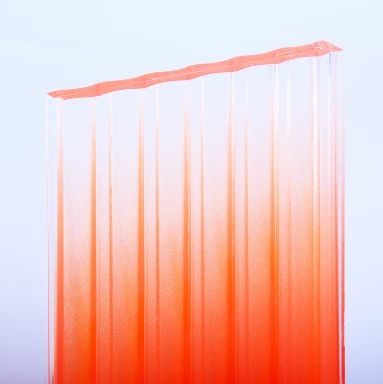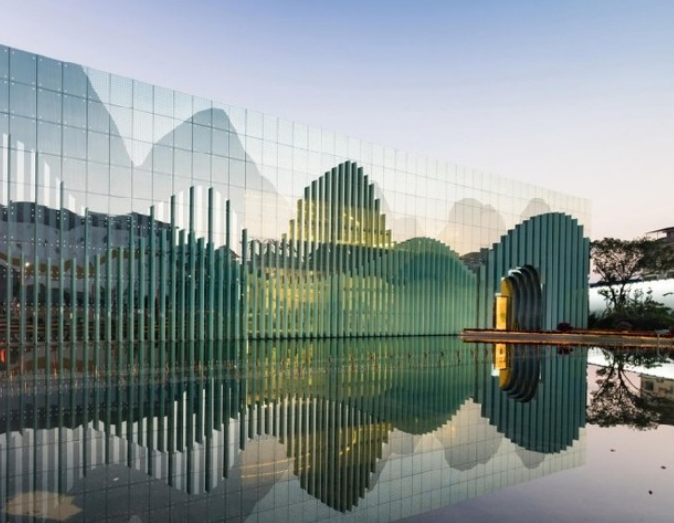Gradient glass with different processes
The Acid Etch Gradient Glass process represents a novel innovation building upon the conventional frosting technique for flat glass. This method produces a captivating visual effect on the same glass, transitioning gradually from hazy to clear, featuring diverse gradient forms. The gradients typically initiate at 0% opacity, progress through 30% and 60%, and culminate at 80%, with the option for additional variations such as deepening transparent colors, ranging from 100% to 20% transparency, and more.
Print Gradient Glass, on the other hand, involves the direct printing of gradient-colored patterns or solid colors onto glass using a digital printer. The process eliminates the need for plate making, printing, and complex color registration, making it a convenient and straightforward operation that aligns seamlessly with industry standards. Digitally printed glass finds versatile applications in both interior and exterior decorations, serving as an ideal choice for partitions, railings, and various other uses.
This method offers several advantages:
Ease of Implementation and Accuracy: It allows for the precise printing of intricate patterns, designs, and lifelike images and graphics, without constraints on colors.
Durability: The ink integrates into the glass, ensuring resistance to scratches and acids, thus enhancing the overall longevity of the printed designs.
A New Medium of Artistic Expression: The technique permits the combination of transparency, gradients, and colors in limitless configurations, enabling a fresh avenue for artistic exploration and expression.
Given these attributes, the Acid Etch Glass Gradient process and the Printing Glass technology open up a realm of creative possibilities, making them highly sought-after for various decorative and functional applications.





